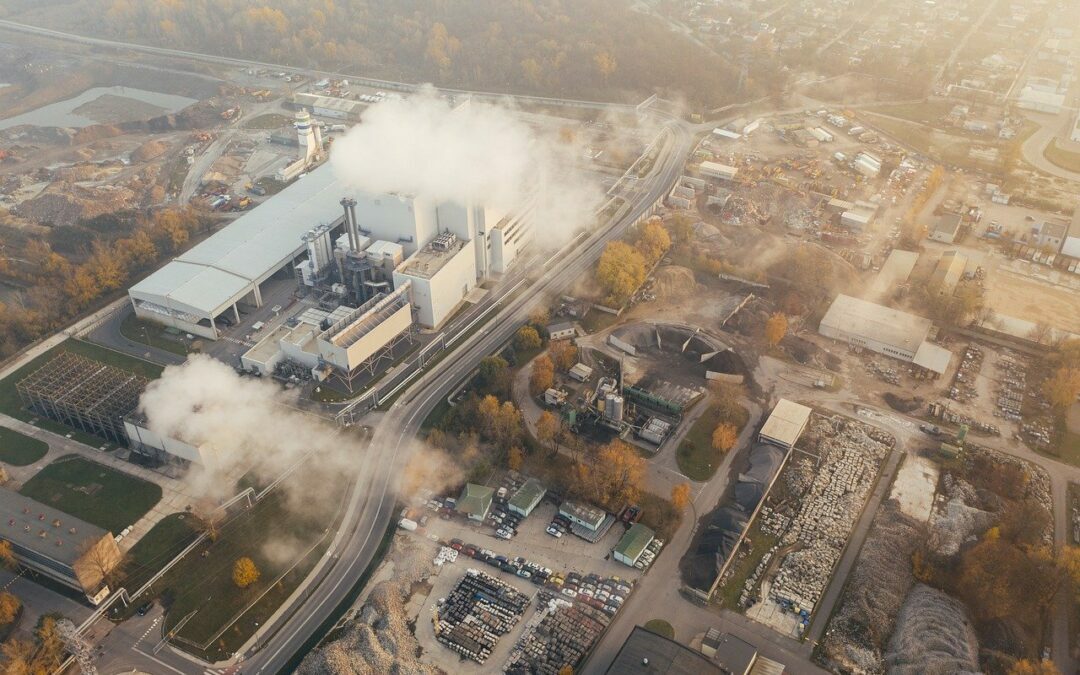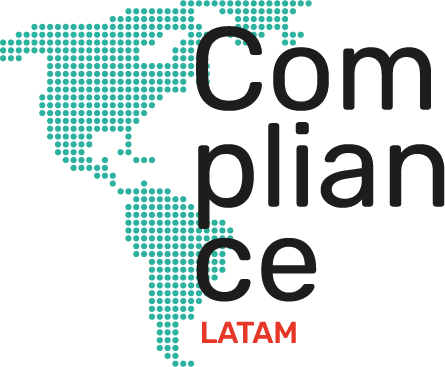
21-07-2023 | Noticias-en
Recently in the region, there have been significant advances in the factors known with the generic expression that groups three non-financial axes of sustainable development of companies: Environmental, Social and Governance (Environmental, Social and Governance or “ESG” for its acronym in Spanish). English).
Why is this topic relevant and what implications does it have and will it have for companies?
The way in which companies are governed or directed directly affects the strategic orientation, the control environment, transparency and accountability to shareholders, investors, collaborators, society, among others, making it more or less attractive and sustainable in the long term. In fact, it is said that the “G” (governance) determines what a company can advance in the “E” and “S” of the ESG perspective.
The professionalization of the Boards of Directors or Boards of Directors of companies is the fundamental piece to trigger the process of strengthening and improving governance and management and, as a natural consequence, the management and sustainability of companies.
Both in Paraguay, Uruguay and Bolivia we found that in general the regulation of some twenty/thirty years ago did not establish anything regarding the professionalization of boards. Commercial activity was free and, therefore, so was the possibility of joining the boards of public limited companies. Certain causes of incompatibilities were foreseen, such as not being able to exercise the direction -in parallel- of two companies with conflicting interests or also certain causes of incapacities, such as the restriction that those persons who could not carry out business or have gone bankrupt, may integrate management bodies (as well as those unable or interdicted etc.).
Years passed without major news, until the central bank authorities of these countries began to issue their respective good corporate governance guides for certain financial entities. Continuing with this evolution and after the passing of the years, these guides were transformed into applicable regulations whose non-compliance becomes sanctioned, expanding its spectrum of application to other obligated companies.
In addition to the above, in recent years companies in the non-financial sector have also begun to design their business plans with an ESG perspective, where the governance factor plays a fundamental role as a pillar that sustains, feeds, and directs environmental and social factors. .
The professionalization of corporate governance is evidenced among others in:
- Integration and functioning of the Board of Directors: with directors who have conditions of probity, suitability and experience, capable of applying an independent judgement.
- Protocol that clearly defines roles and relationships between the governing bodies and their directors with the management and management level.
- Risk analysis and management processes: the preparation of a company risk matrix, with the intention of mapping critical situations, controlling them and therefore adequately managing their risk of occurrence.
- Independence and separation of functions between the various committees and other government bodies (audit, compliance, etc.).
- Appropriate policies for the prevention of conflicts of interest.
- Compensation plans reviewed annually, where shareholders approve the compensation of the directors and these of the other bodies under their responsibility.
These are just some of the aspects to consider. The important thing is not to see them as a check list to be fulfilled, but rather as different elements in which the company’s genuine interest in strengthening its corporate governance is manifested. In this sense, it must be conceived as a process that starts from an awareness of its managers, an analysis of the starting situation and a clear definition of the type of governance that makes the most sense for the type of company and business.
For more information contact to:

Carla Arellano | Counsel Ferrere | carellano@ferrere.com

20-07-2023 | Noticias-en
Joint report of the ESG and Capital Markets departments | ISSB Issues Inaugural Global Sustainability Disclosure Standards
On June 26, the International Sustainability Standards Board (ISSB) issued its inaugural standards , IFRS S1 and IFRS S2 , ushering in a new era of sustainability-related disclosures in the capital markets around the world.
IFRS S1 provides a set of disclosure requirements designed to enable companies to communicate to investors the sustainability-related risks and opportunities they face in the short, medium and long term. IFRS S2 sets out specific disclosures related to weather and is designed to be used with IFRS S1. These ISSB standards are designed to ensure that companies provide sustainability-related information along with financial statements, in the same reporting package.
With the issuance of IFRS S1 and IFRS S2, the ISSB will work with jurisdictions and companies to support their adoption. The first steps will be the creation of a Transition Implementation Group to support companies applying the Standards and the launch of capacity building initiatives to support effective implementation.
The ISSB will also continue to work with jurisdictions that wish to require incremental disclosures beyond the global baseline and with GRI to support efficient and effective reporting when the ISSB standards are applied in combination with other reporting standards.
A. IFRS S1: General requirements for the disclosure of financial information related to sustainability
Its objective is to require entities to disclose all risks and opportunities related to sustainability that could reasonably be expected to affect the entity’s cash flows or its access to financing, which are useful to users of general purpose financial reports when when making decisions related to providing resources to entities.
Unless otherwise permitted or required by another IFRS sustainability disclosure standard, entities must make statements about:
— Governance : the processes, controls and procedures that the entity uses to monitor risks and opportunities related to sustainability.
— Strategy : the approach the entity uses to manage the risks and opportunities related to sustainability.
> Business model and value chain
> Strategy and decision-making
> Financial situation and performance, cash flows
> Resilience
— Risk management : the processes the entity uses to identify, assess, prioritize and monitor risks and opportunities related to sustainability.
— Measures and objectives : the performance of the entity in relation to the risks and opportunities related to sustainability, including progress towards any objectives that the entity has established or is required by legal regulation.
General requirements :
to. Guidance sources :
Yo. Identify risks and opportunities related to sustainability.
ii. Identify applicable disclosure requirements.
iii. Disclosure of information about sources of guidance.
b. Location of information (disclosure) : Entities are required to make the disclosures required by the IFRS Sustainability Disclosure Standards as part of their general purpose sustainability reporting.
c. Reporting schedule : Financial statements and financial information related to sustainability must be submitted on time.
Yo. Typically, an entity prepares sustainability-related financial disclosures for a period of 12 months. However, for practical reasons, some entities prefer to report, for example, over a period of 52 weeks. This rule does not preclude that practice.
ii. This standard does not require which entities would be required to provide sustainability-related interim financial disclosures, how often, or how soon after the end of an interim period.
d. Corporate information : The entity will disclose comparative information with respect to the prior period for all amounts disclosed in the reporting period.
and. Compliance Statement :
Yo. This standard exempts an entity from disclosing information required by an IFRS Sustainability Disclosure standard if law or regulation prohibits the entity from disclosing that information.
ii. It also exempts an entity from disclosing information about a sustainability-related opportunity required by an IFRS Sustainability Disclosure standard if that information is commercially sensitive as described in this standard.
Source: IFRS – IFRS S1 General Requirements for Disclosure of Sustainability-related Financial Information
B. IFRSS2: Weather related disclosures
Its objective is to require entities to disclose all risks and opportunities related to climate change that could reasonably be expected to affect the entity’s cash flows or its access to financing, which are useful to users of general purpose financial reports. when making decisions related to providing resources to entities.
Scope:
to. Climatic risks to which the entity is exposed :
Yo. Physical risks, and
ii. Transition risks.
b. Climate-related opportunities available to the entity.
— Governance :
> The governance body for oversight of climate-related risks and opportunities. Specifically, the entity will identify that agency or individual and disclose the information.
> The role of management in the governance processes, controls and procedures used to monitor, manage and supervise climate-related risks and opportunities.
— Strategy : Enable users of general purpose financial reports to understand an entity’s strategy for managing weather-related risks and opportunities.
> Business model and value chain
> Strategy and decision-making
> Financial situation and performance, cash flows
> Climate resilience
— Risk management : Enable users of general purpose financial reports to understand an entity’s processes for identifying, assessing, prioritizing, and monitoring weather-related risks and opportunities, including whether those processes are integrated with and inform the overall risk management process. risk management of the entity and how.
— Measures and objectives :
— Measurements
to. Greenhouse Gases (GHG) :
Yo. Disclose your gross absolute greenhouse gas emissions generated during the reporting period, expressed in metric tons of CO 2 equivalent , classified as:
> Scope 1 Greenhouse gas emissions;
> Scope 2 Greenhouse gas emissions;
> Scope 3 Greenhouse gas emissions.
ii. Measure your greenhouse gas emissions in accordance with the Greenhouse Gas Protocol: A Corporate Accounting and Reporting Standard (2004).
iii. Disclose the approach it uses to measure its greenhouse gas emissions, including:
1. The measurement approach, inputs and assumptions the entity uses to measure its greenhouse gas emissions;
2. The reason why the entity has chosen the measurement approach; and
3. Any changes the entity has made in the measurement method and the reasons for those changes.
b. Climate-related transition risks .
c. Weather-related physical hazards .
d. Climate-related opportunities .
and. Deployment of capital .
F. Internal carbon prices .
g. Compensation :
> Whether and how climate-related considerations are factored into executive compensation.
> the percentage of executive management compensation recognized in the current period that is linked to climate-related considerations.
— Objectives :
to. The metric used to set the goal;
b. goal objective;
c. Part of the entity to which the goal applies;
d. Period during which the goal applies;
and. Base period from which progress is measured;
F. intermediate goals;
g. Absolute or intensity target; and
h. How the most recent international treaty has informed the target.
Source: IFRS – IFRS S2 Climate-related Disclosures
For more information contact:

Gustavo Papeschi | Partner de Beccar Varela | gpapeschi@beccarvarela.com

15-06-2023 | Noticias-en
Through Executive Decree No. 754 of May 31, 2023, President Guillermo Lasso amended the Regulations to the Organic Code of the Environment (hereinafter, “ RCODA ”).
This reform is preceded by Judgment No. 22-18-IN/21 of September 8, 2021, in which the Constitutional Court: (i) Clarified that environmental consultation and prior consultation with indigenous communities are different consultations, and that Art. 184 of the CODA does not apply or replace the right to prior consultation of indigenous communities; (ii) Ordered that Art. 184 of the CODA must be interpreted according to the Constitution of the Republic, the jurisprudence of the Constitutional Court, and the Escazú Agreement; [1] (iii) Declared the unconstitutionality of Arts. 462 and 463 of the RCODA; and (iv) Ordered the President to adapt the RCODA to the resolution. Subsequently, the aforementioned Court issued Judgment No. 1149-19-JP/21 of November 10, 2021, in which the right to environmental consultation was developed.
The main reforms carried out by Decree No. 754 are the following:
1. The citizen participation process is reformed. This will no longer be governed by the technical standard of the Environmental Authority but by the one established in the RCODA, below. In addition, the majority opposition of those consulted is regulated, indicating that it is not binding. However, it is established that, if the environmental permit is granted despite majority opposition, it must be duly motivated.
2. All regulations in the RCODA regarding prior consultation with indigenous communities are repealed and Title III of Book III of the RCODA on the process of citizen participation for environmental consultation is amended:
2.1. It is established that the right to environmental consultation will consist of informing the community ” about the content of the environmental technical instruments, the possible environmental impacts and risks that could derive from the execution of projects, works or activities , as well as the relevance of the actions to be taken ”, record and compile your criteria, opinions and observations, and with this, consult you about the granting of the corresponding environmental permit.
2.2. It is added that the rules on the citizen participation process for environmental consultation are mandatory and apply in the case of an environmental license, always, and in the case of environmental registration for activities in the hydrocarbon and mining sector.
23. It is established that the citizen participation process for environmental consultation must be carried out prior to the granting of environmental permits. Additionally, the following changes are added to the process:
2.3.1. The Ombudsman’s Office must be notified so that this entity can proceed to provide support to the community and monitor the process. Their participation is mandatory, however, their unjustified absence will not lead to the nullity of the process.
2.3.2. The operator of the project, work or activity must deliver to the competent Environmental Authority the environmental technical instruments that it requires, as well as all communication materials or supplies for the didactic dissemination of such instruments (eg summaries, triptychs, slides, etc. ). All deliverables must be translated, when applicable.
2.3.3. To carry out the process, citizen participation mechanisms will be used, including the following: (i) Informative mechanisms (eg, informative assemblies, electronic pages, informative videos, delivery of informative documentation on environmental technical instruments, public information centers, workshops of environmental socialization, (ii) Call mechanisms (eg public call, personal invitations), and (iii) Consultation mechanisms (Consultation Assembly).
2.3.4. Special provisions to be considered when the consultation is carried out in the territories of indigenous peoples are included: provisions related to their ancestral languages and their forms of organization and decision-making.
2.3.5. The operator of the project, work or activity will be the one who must finance the environmental consultation process, its call and logistics. He must also provide all the facilities and provide all the necessary resources for its execution.
2.3.6. The process will be divided into two phases: (i) Informative Phase and (ii) Consultative Phase. The first is the delivery of information. In the second, there is a dialogue between the State and the community in order to present the opinions and observations of the community and consult regarding the issuance of the environmental permit.
3. The validity of all environmental permits that were issued before the reform is ratified. On the other hand, any project, work or activity registered in the SUIA until October 11, 2021 will follow the process prior to the reform. Processes initiated at a later date will continue with this reform, even if they have received a technical pronouncement, as well as projects, works and activities in the mining sector blocked in the SUIA by Judgment No. 1149-19-JP/21.
For more information contact:

Maria Rosa Fabara | Partner Bustamante Fabara | mrfabara@bustamantefabara.com

04-05-2023 | Noticias-en
Towards the end of April 2023, Indecopi published the Draft Guide on Environmental Advertising (hereinafter, the “Draft”), so that advertisers, consumers and the general public can issue their comments and contributions on this document, which contains guidelines minimum standards that must be followed when disseminating environmental and sustainability advertising (hereinafter, “Green Advertising”), in order to avoid distorted or exaggerated messages regarding the positive impact on the environment of the products and/or services offered in the market; practice commonly known as Greenwashing.
Some of the highlights of the project are:
Regarding Green Advertising, advertisers must take into account the following principles: prior substantiation, Clarity, Pertinence, Transparency, and fair comparison. This in order to avoid misleading consumers regarding the positive impact on the environment that their products and/or services would have.
The advertiser must take into account the meaning of the environmental terms used, as well as the colors, images and, in general, the presentation of the product and/or service offered. Likewise, it must ensure that the information that it conveys to the consumer through its advertisements is accessible, and allows them to know if any stage of the product’s production cycle causes any negative impact on the environment.
Advertisers may include statements related to different specific parameters of environmental protection, in relation to carbon emissions, compostable products, degradable products, sustainable products, eco-friendly products and/or services, among others. However, these allegations will only be lawful if they comply with the aforementioned principles.
It should be noted that the Project is not a definitive document, therefore, it may be modified or updated by Indecopi. In this sense, economic agents and/or consumers can provide their opinions and comments on the Project until May 15, 2023 through an email addressed to consultas-ccd@indecopi.gob.pe
Finally, it is important to remember that the fines for non-compliance with the regulations for the repression of unfair competition amount to a maximum of 700 UIT. Therefore, it is important that advertisers take into account the guidelines proposed by the Project when disseminating environmental advertising.
For more information contact:

Mario Pinatte | CPB Partner | mpinatte@cpb-abogados.com.pe

21-04-2023 | Noticias-en
The Synthesis Report (SYR) of the IPCC Sixth Assessment Report (AR6) was released, summarizing the state of knowledge on climate change, its widespread impacts and risks, and climate change mitigation and adaptation. It integrates the main conclusions of the Sixth Assessment Report (AR6) based on the contributions of the three working groups and the three special reports. The Summary for Policy Makers (SPM) is structured in three parts:
A. Current situation and trends, SPM.
B. Future climate change, long-term risks and responses, and SPM.
C. Short-term responses.
The report recognizes the interdependence of climate, ecosystems and biodiversity, and human societies; the value of the various forms of knowledge; and the close links between climate change adaptation, mitigation, ecosystem health, human well-being and sustainable development, and reflects the increasing diversity of actors involved in climate action.
Based on scientific understanding, the key conclusions can be formulated as statements of fact or associated with a level of confidence assessed using the IPCC calibrated language.
IPCC Sixth Assessment Report
For more information contact:

Gustavo Papeschi | Partner of Beccar Varela | gpapeschi@beccarvarela.com






